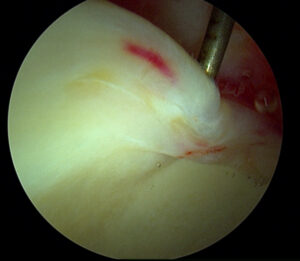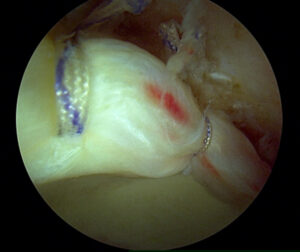
Fact 1: The Crucial Role of the Hip Labrum
The hip labrum is a ring of cartilage encircling the hip socket, providing vital support and stability to the hip joint. Acting as a cushion and seal, it ensures smooth movement and reduces friction during activities like walking, running, and jumping. When the labrum becomes torn or damaged, it can lead to hip pain and limited mobility.
Fact 2: Common Causes and Symptoms
Labral tears can result from various causes, including sudden injuries, overuse, or structural issues in the hip joint. Athletes and physically active individuals are particularly susceptible to these injuries. Recognizing the symptoms of a labral tear is essential for early detection. Common signs include hip pain, a sensation of catching or locking in the joint, reduced range of motion, and stiffness.

Fact 3: Minimally Invasive Solution – Hip Arthroscopy
Hip arthroscopy is a cutting-edge surgical technique used to repair labral tears with minimal invasiveness. During the procedure, a small camera called an arthroscope is inserted into the hip joint through tiny incisions. This allows the surgeon to visualize the internal structures and repair the damaged labrum using specialized instruments. Compared to traditional open surgery, arthroscopy offers faster recovery, reduced scarring, and lower risks of complications.
Fact 4: Importance of Timely Treatment and Rehabilitation
Early and effective diagnosis is key to treating labral tears successfully. Many patients can recover from a tear of the labrum with a focused rehabilitation program, aimed at strengthening the muscles around the hip. Surgery is only considered as a last resort for patients who have tried all other options. For those patients who do require surgical repair, a structured rehabilitation program is essential for regaining strength and range of motion in the hip joint.
Fact 5: Promising Outcomes and Improved Quality of Life
Arthroscopic labral repair has shown promising success rates in alleviating hip pain and restoring hip joint stability. By addressing the labral tear, this procedure helps improve the patient’s quality of life and enables them to resume their regular activities. If you experience persistent hip pain or suspect a labral tear, do not hesitate to consult a healthcare professional to discuss a personalized plan for diagnosis and treatment.

